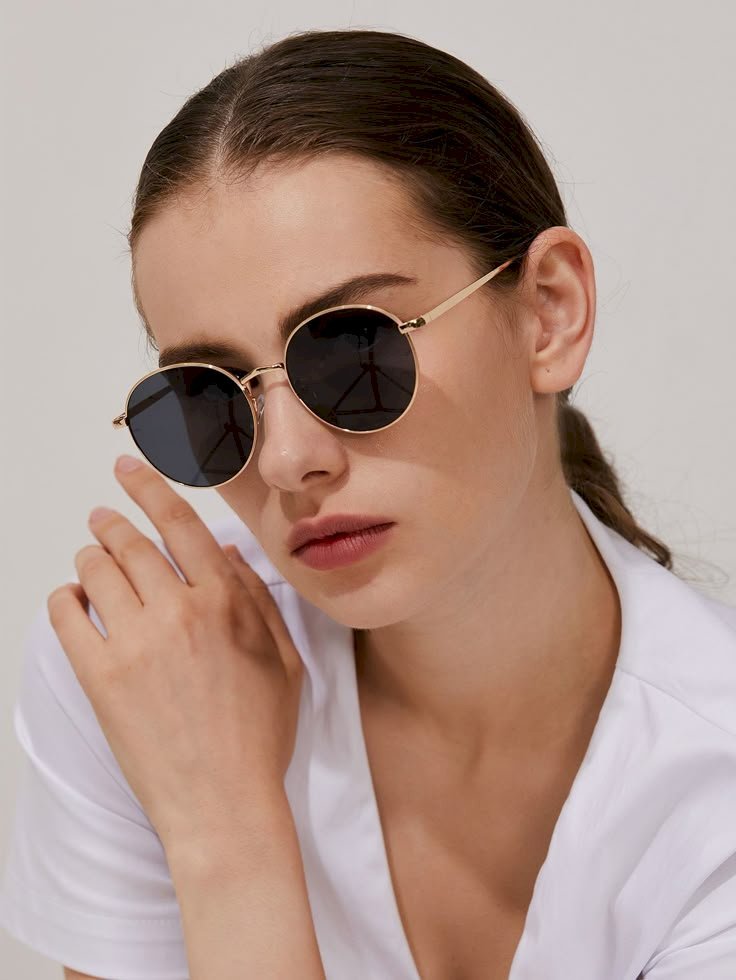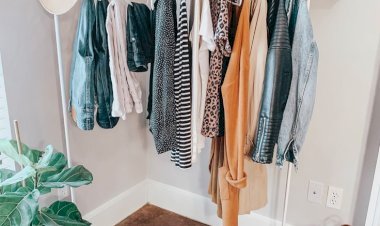How to Choose Sunglasses Size: Complete Guide for Perfect Fit & Style
Learn how to choose sunglasses size with our complete U.S. guide. Easy steps, charts & tips for comfort, style & 100% UV eye protection.

Finding the right pair of sunglasses is more than style—it’s about comfort, eye protection, and choosing frames that truly fit your face. If your sunglasses pinch, slip, or look off, the size is likely wrong. Learning how to choose sunglasses size is simple once you know which measurements matter and how to match them to your face. ➤ In this article, we are going to show you everything you need to know about picking the right sunglasses size so you never waste money on a poor fit again.
Why Sunglasses Size Matters for Comfort (and Protection)
A correct fit stays put without squeezing your temples or sliding down your nose; it also improves eye coverage so less UV sneaks in from the sides. Sunglasses that are too small can cause pressure points and headaches; frames that are too large can feel unstable and allow stray light. Proper coverage plus 99–100% UV protection helps reduce risks associated with UV exposure (for example, eye and skin damage around the eyes).
Understanding Sunglasses Measurements (The “52-18-140” Code)
Most frames list three numbers inside the temple arm, like 52-18-140. These are, in millimeters: lens width – bridge width – temple length. Some brands also show frame width and lens height on product pages. Knowing this code is step one in how to choose sunglasses size because it lets you compare any pair to one that already fits. Guides from major U.S. retailers (e.g., Warby Parker, Ray-Ban) explain exactly how to read these numbers and where to find them.
How to Measure Your Face for Sunglasses (At Home in 3 Minutes)
You can measure at home with a mirror and a millimeter ruler or soft tape:
- Temple-to-temple (face width): hold the ruler across your brow where the frame front would sit.
- Bridge width (nose): measure the flat part of your nose where the bridge rests.
- Temple length: measure from the ear hinge area, along the ear, to where the arm ends.
- Quick hack: a standard credit card is ~54 mm wide; if it roughly matches the distance between the outer edges of your eyes, you’re around a “medium” lens width.
Retailer size pages and mainstream how-to guides use these exact measurements to recommend size ranges.
Step-by-Step Measuring Guide (print this mini checklist)
- Stand facing a mirror in good light.
- Use a mm ruler/tape; keep it level.
- Measure face width, bridge, temple as above.
- Check any old glasses for their size code and note what felt comfortable.
- Compare your numbers to the sizing chart below.
Major U.S. retailers also provide printable rulers and virtual try-on to validate your numbers before checkout.
Sunglasses Size Guide (Lens, Bridge, Temple)
Typical adult ranges (estimates based on common retail fit guidance):
|
Size |
Lens Width |
Bridge Width |
Temple Length |
Best For |
|
Small |
49–54 mm |
16–19 mm |
135–140 mm |
Narrow faces |
|
Medium |
55–57 mm |
20–22 mm |
140–145 mm |
Average faces |
|
Large |
58–63 mm |
23–24 mm |
145–150 mm |
Wider faces |
These ranges align with common fit recommendations from large U.S. eyewear retailers and brand size guides. Always check each brand’s page because cuts differ by style.
How to Read Frame Numbers (and Why They Matter)
If you see 52-18-140 on your current pair and it feels perfect, start your next search with similar numbers. Lens width affects style and peripheral vision; bridge width affects slip/pinch; temple length affects stability behind the ear. U.S. retailer guides confirm these codes are the quickest way to translate “feels good” into repeatable measurements online.
Match Your Face Shape to Frame Shapes (Without Overthinking It)
- Round face: add angles (rectangle, square).
- Square face: soften with round/oval.
- Heart/triangle: balance with aviator or cat-eye.
- Oval: most styles work; use width for balance.
Face-shape tips help with style, but size still rules comfort. Use shape to narrow styles, then finalize by numbers and total frame width. (Brand size guides emphasize frame width and bridge fit over shape alone.)
Why Frame Material Changes the Fit
- Acetate/plastic: holds shape; less adjustable at the bridge.
- Metal/titanium: lighter; often includes adjustable nose pads.
- TR90/sport plastics: flexible, durable, good for active use.
Adjustable nose pads and grippy temple tips improve stability—especially for sports or warm weather. (Professional dispensing literature stresses proper contact at the nose and ear points for comfort and optical performance.)
Sport & Outdoor Use: Wrap, Coverage, and Stability
For running, cycling, fishing, or snow days, a closer “wrap” reduces stray light and wind. Look for slightly snug temples, rubber nose pads, and lenses that cover the brow and outer corners (better side protection). Public-health guidance emphasizes protecting eyes from reflected UV (water, sand, snow), which is another reason wrap and coverage matter outdoors.
Kids’ Sunglasses: What Parents Should Know
Children need youth-sized frames with 100% UV protection (often labeled UV400) and lightweight materials. Choose sizes that stay put during play without leaving marks on the nose or behind the ears. Pediatric guidance recommends sunglasses with at least 99% UV protection for all kids when outdoors—just like adults.
Common Fit Problems—and Quick Fixes
- Slides down nose: bridge too wide; switch to a smaller bridge or add adjustable nose pads.
- Temple pressure/headaches: frame too narrow or temples too short; try a wider lens/longer temple.
- Touches cheeks: lens height too tall or frame sits low; look for higher bridge fit or shorter lens height.
Many optical shops will adjust nose pads and temples at no charge—worth asking. (Professional fit references highlight nose and ear fit as the key contact points.)
Oversized vs. Standard vs. Sport (Quick Comparison)
|
Type |
Fit & Comfort |
Best For |
Watch Outs |
|
Standard |
Balanced; easy everyday fit |
Commuting, casual wear |
May allow more side light |
|
Oversized |
Extra coverage; bold look |
Fashion, bright sun |
Can overwhelm small faces |
|
Sport/Wrap |
Snug with side coverage |
Running, cycling, fishing, snow |
Less “dressy” for daily wear |
More coverage helps with stray light, but fit first: frames shouldn’t extend past the widest part of your face more than a few millimeters. (Public-health sources stress year-round UV exposure—even on cloudy days.)
Driving & Everyday Use: Comfort Meets Safety
Choose frames that don’t block peripheral vision. Polarized lenses reduce glare off roads and water; UV protection (99–100%) is still essential because polarization ≠ UV filtering by itself. (Health and ophthalmology guidance distinguishes UV blocking from polarization and recommends UV400 as a reliable shorthand for 100% UVA/UVB).
Prescription Sunglasses: Keep Size Close to Your Everyday Glasses
If you wear prescription lenses, staying near your regular fit often yields thinner, lighter lenses and a stable field of view. Ultra-wide frames may require thicker edges for some prescriptions; extremely small frames can limit coverage. When in doubt, ask your optician to confirm lens thickness and optical center for the chosen frame. (Dispensing references emphasize marrying frame fit to optical requirements.)
Shopping Online: Reduce Sizing Guesswork
- Use virtual try-on and size filters.
- Compare to a pair you already love (match the 3-number code).
- Verify return/exchange policies before you buy.
The biggest U.S. retailers publish clear sizing pages and walkthroughs to help you translate measurements into a confident purchase.
U.S. Standards & Labels Worth Knowing
- UV Claim: Look for “100% UV protection” or “UV400.”
- Standards: The U.S. ANSI Z80.3 standard covers sunglasses lens quality, impact resistance, and UV specifications; the FDA classifies sunglasses as medical devices and enforces labeling/impact testing provisions.
“Alternative Fit” (Low-Bridge/High-Cheekbone) Options
If frames sit on your cheeks or slide down a low bridge, look for low-bridge fit/alternative fit/Asian fit options. These typically use a narrower bridge, different nose pad geometry, and sometimes altered tilt to keep lenses off the cheeks and improve stability.
Sample Sizes of Popular Models (to Practice Reading Numbers)
- Ray-Ban Wayfarer (Original): commonly ~50–54 mm lens widths (medium).
- Oakley Holbrook: ~55–57 mm (medium/large).
- Warby Parker Durand: ~52 mm (medium).
Treat these as starting points, then fine-tune bridge and temple for comfort using brand size pages.
Quick Coverage & UV Checklist (save this)
- 99–100% UVA/UVB (look for UV400).
- Lenses that cover the brow and outer corners (less side light).
- Bridge width that doesn’t slip; temples that don’t pinch.
- For sports: light, grippy, and close to the face.
Public health orgs emphasize year-round UV protection across seasons and reflective environments.
Conclusion
Now you know how to choose sunglasses size: read the size code, measure your face, compare to a realistic chart, and confirm coverage and UV claims. Match shape to your face for style—but let numbers and comfort make the final call. With the right size and UV protection, your sunglasses will look better, feel better, and protect better—every day.
FAQs
What does 52-18-140 mean on sunglasses?
It’s a sizing code: lens width – bridge width – temple length (in mm). Use it to match any new pair to a frame that already fits you well; most brand sizing pages show where to find this code.
Are polarized lenses the same as UV protection?
No. Polarization cuts glare, while UV protection blocks harmful rays. You can have polarized lenses without full UV protection, so always look for UV400 or “100% UV protection.”
Do kids really need sunglasses with UV protection?
Yes—pediatric guidance recommends sunglasses with at least 99% UV protection for children whenever they’re outdoors. Youth-sized frames help them stay on comfortably.
Is there a U.S. standard for sunglasses quality?
Yes. ANSI Z80.3 covers sunglasses optical quality, impact resistance, and UV requirements; the FDA oversees labeling and impact testing provisions for eyewear devices.
What time of day is UV strongest?
In the continental U.S., UV tends to be strongest from 10 a.m. to 4 p.m. (daylight saving time). Protection matters year-round, even on cloudy days.

 Selina Smith
Selina Smith 















